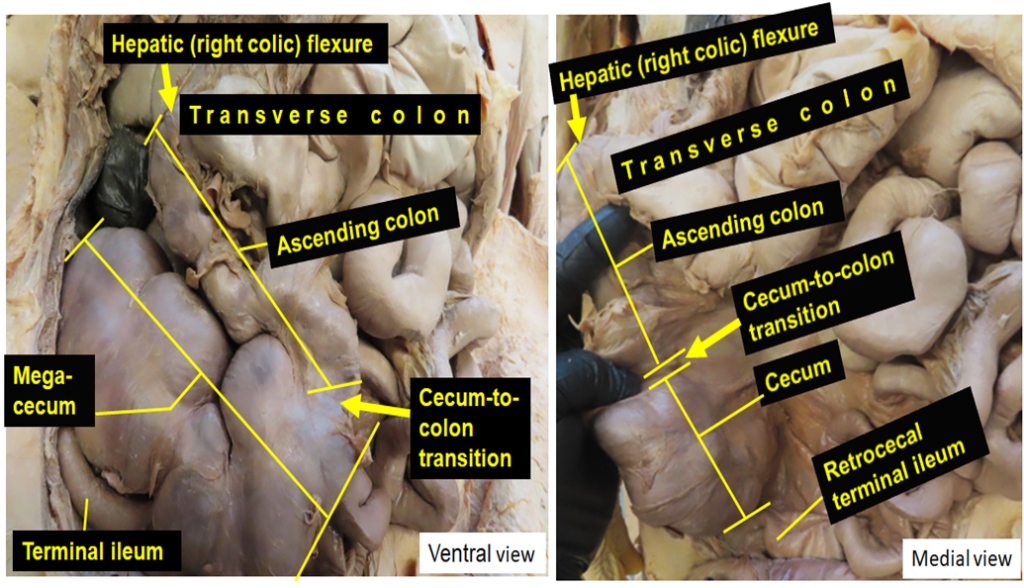*Correspondence to: Chernet Bahru Tessema, Department of Biomedical Sciences, School of Medicine and Health Sciences, University of North Dakota, USA
Received: Jul 02, 2023; Accepted: Jul 07, 2023; Published: Jul 13, 2023
Citation: Tessema CB (2023) Mega-Cecum with Short Intraperitoneal Ascending Colon and Retrocecal Terminal Ileum: A Short Review and Case Report. J Anatomical Variation and Clinical Case Report 1:103. DOI: 10.61309/javccr.1000103
Copyright: ©2023 Tessema CB. This is an open-access article distributed under the terms of the Creative Commons Attribution License, which permits unrestricted use, distribution, and reproduction in any medium, provided the original author and source are credited.
ABSTRACT
The dissection of the abdominal cavity of an 81-year-old male donor revealed an unusually large cecum, filling the right iliac fossa and most part of the right side of the peritoneal cavity up to the fundus of the gall bladder. It was attached to the parietal peritoneum of the posterior abdominal wall by a short mesocecum. The ileocecal junction was shifted posterolaterally, closer to the posterolateral abdominal wall and the terminal ileum was found running from medial to lateral dorsal to the cecum (retrocecal) to reach the ileocecal junction. The cecum continued into a short intraperitoneal ascending colon with a long ascending mesocolon. The transitional area between the cecum and ascending colon was displaced medially close to the lumbar vertebral column. Since the ileocecal region is one of the common sites of different kinds of gastrointestinal diseases, such a complex variation can cause diagnostic and therapeutic difficulty that could result in failure of treatment as well as iatrogenic injuries during various procedures. Therefore, gastroenterologists, gastrointestinal surgeons and radiologists must be aware of such coexisting variations of the cecum, ileum and ascending colon.
Keywords: Ascending mesocolon; Intraperitoneal ascending colon; Mega-cecum; Mesocecum; Retrocecal terminal ileum

Figure 1: Illustrates the right half of the peritoneal cavity showing the mega-cecum, filling the space from the iliac fossa to the level of fundus of the gall bladder in the right upper quadrant of the abdomen. The short ascending colon and the retrocecal terminal ileum are also shown.
